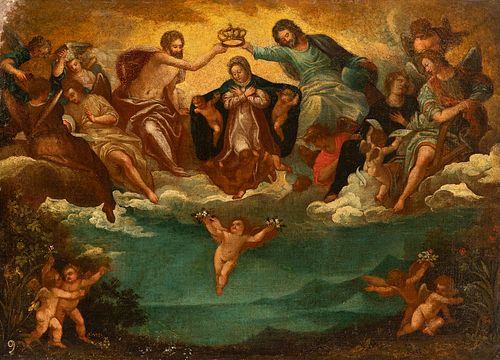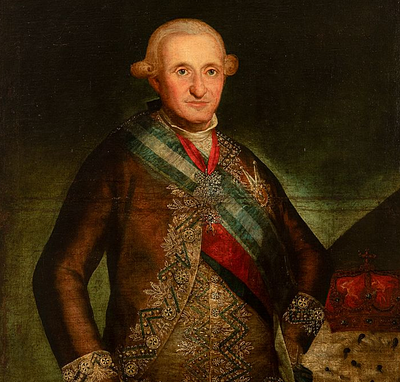Spanish or Italian school; 17th century. "Coronation of the Virgin" Oil on canvas. Relined It presents restorations.
Lot 17
About Seller
Setdart Auction House
Carrer Aragó 346
Barcelona
Spain
Setdart Subastas was born in 2004 and is currently the first online art auction in Spain with solidity, prestige and reliability guaranteed by our more than 60,000 users. Setdart has a young, dynamic and enterprising team ready to successfully manage the purchase and sale of art works through custom...Read more
Estimate:
EUR€700 - EUR€1,000
$721.65 - $1,030.93
Absentee vs Live bid
Two ways to bid:
- Leave a max absentee bid and the platform will bid on your behalf up to your maximum bid during the live auction.
- Bid live during the auction and your bids will be submitted real-time to the auctioneer.
Bid Increments
| Price | Bid Increment |
|---|---|
| EUR€0 | EUR€10 |
| EUR€200 | EUR€25 |
| EUR€500 | EUR€50 |
| EUR€1,000 | EUR€100 |
| EUR€3,000 | EUR€200 |
| EUR€5,000 | EUR€500 |
| EUR€10,000 | EUR€1,000 |
| EUR€20,000 | EUR€2,000 |
| EUR€50,000 | EUR€5,000 |
About Auction
By Setdart Auction House
Sep 22, 2021
Set Reminder
2021-09-22 09:30:00
2021-09-22 09:30:00
America/New_York
Bidsquare
Bidsquare : 22nd September - ARAS JÁUREGUI Private Collection - Old Masters, 19th & 20th Century
https://www.bidsquare.com/auctions/setdart-auction-house/22nd-september---aras-j-uregui-private-collection---old-masters-19th-20th-century-7427
ARAS JÁUREGUI Private Collection - Old Masters, 19th & 20th Century Setdart Auction House sofia@setdart.com
ARAS JÁUREGUI Private Collection - Old Masters, 19th & 20th Century Setdart Auction House sofia@setdart.com
- Lot Description
Spanish or Italian school; 17th century. "Coronation of the Virgin" Oil on canvas. Relined It presents restorations. Measurements: 40,5 x 55,5 cm. This work follows a classic composition in this type of representations, with the image divided in an earthly and a heavenly plane. With the three main figures of the same size, located in the upper area, and following a triangular structure. The Virgin in the centre is being crowned, with Jesus the Son and God the Father holding the crown, flanking the Virgin, and giving her the role of mother of Christianity. Mary is positioned genuflecting, with her face turned slightly towards the ground and her eyelids lowered in a reflective attitude. It is very interesting that the work does not show the presence of the dove, a representation of the Holy Spirit, a fundamental iconographic element in these representations. The scene is completed by a group of musical angels and seraphim, who are arranged at the sides of the coronation, in the form of a frieze, which indicates that it would be a procession, celebrating the glory of the Virgin. In the lower area, the earthly part, a landscape, which opens out in the centre onto a lake, is the main feature of the image. Although there is no human presence, small angels can be seen interacting with each other and picking white flowers, typical of the symbolism of the Virgin. The theme of the coronation of the Virgin was recounted in the 2nd century by Saint Meliton, Bishop of Sardis, and later disseminated by Gregory of Tours and Saint James of Voragine, who recorded it in his famous legend Aurea. The Coronation of the Blessed Virgin is also a subject of devotion throughout Christianity. Beyond art, the Coronation is a central motif in Marian Processions all over the world.
- Shipping Info
-
In-house shipping available. Please inquire at admin@setdart.com.
-
- Buyer's Premium



 EUR
EUR CAD
CAD AUD
AUD GBP
GBP MXN
MXN HKD
HKD CNY
CNY MYR
MYR SEK
SEK SGD
SGD CHF
CHF THB
THB

















